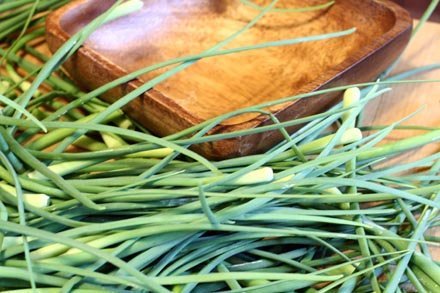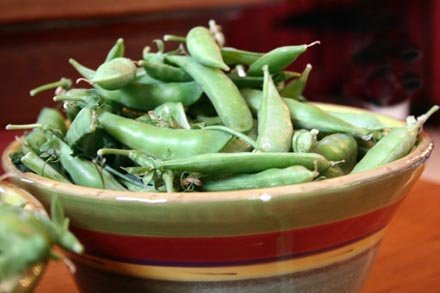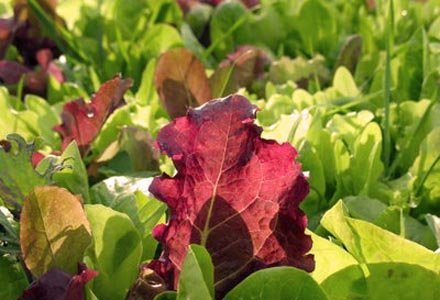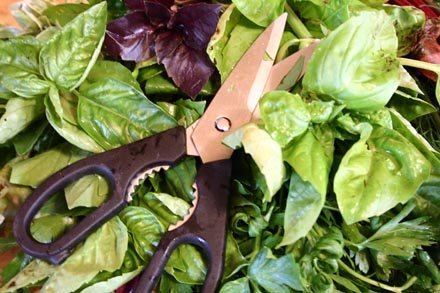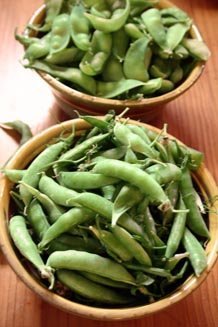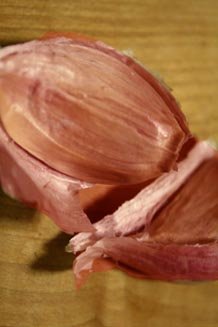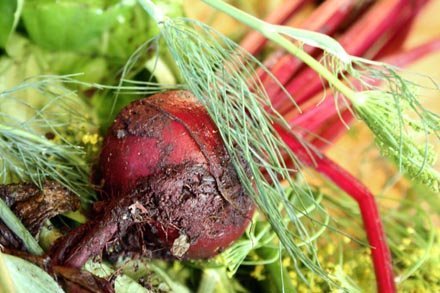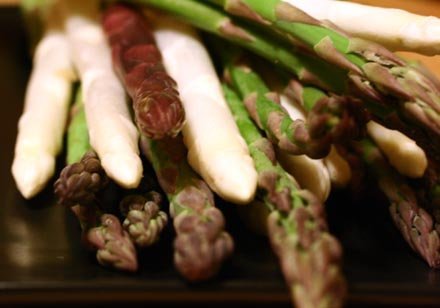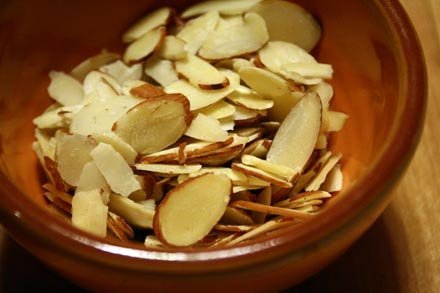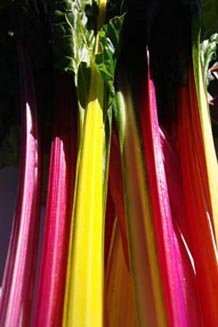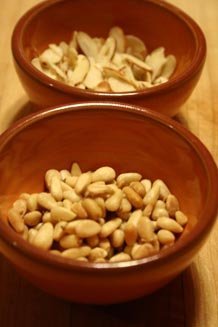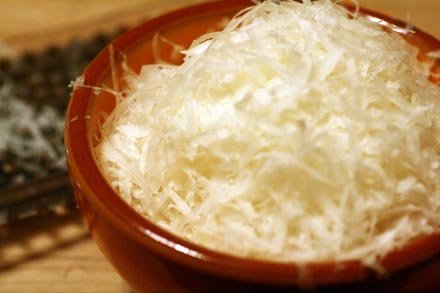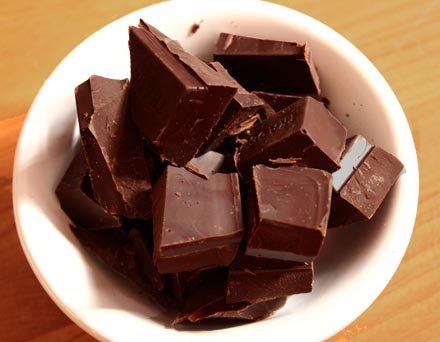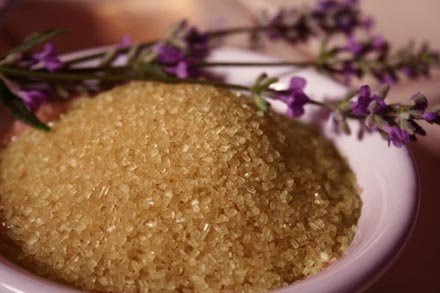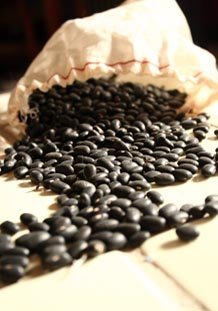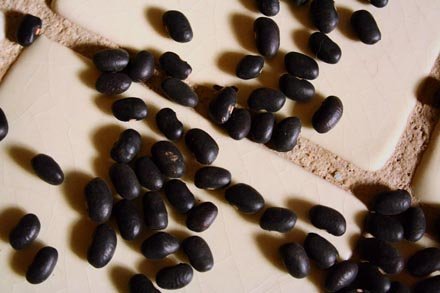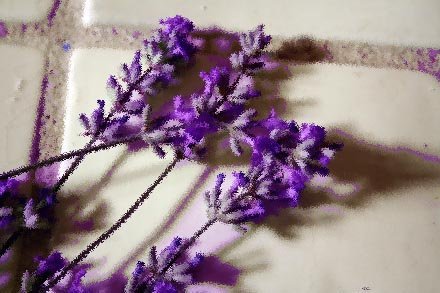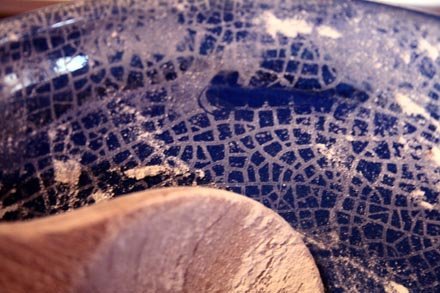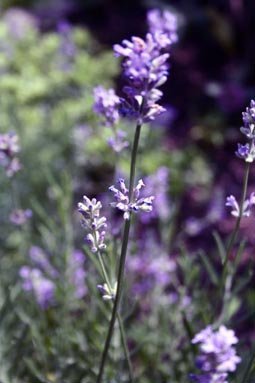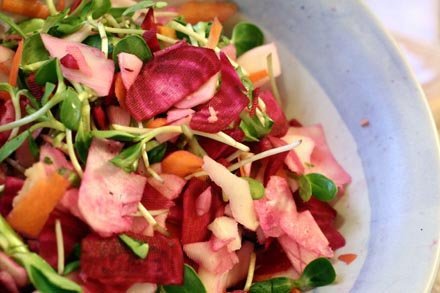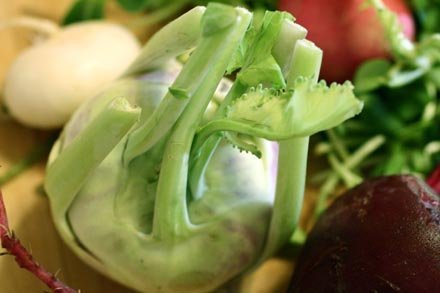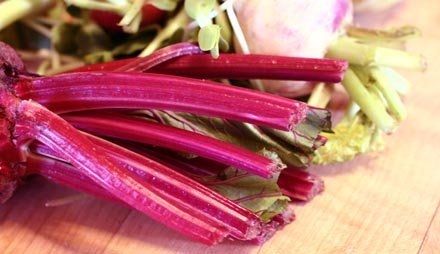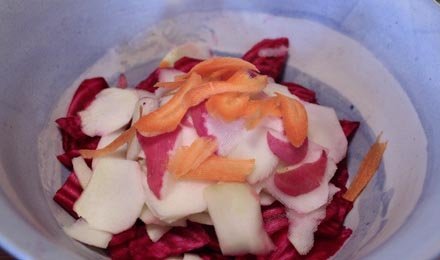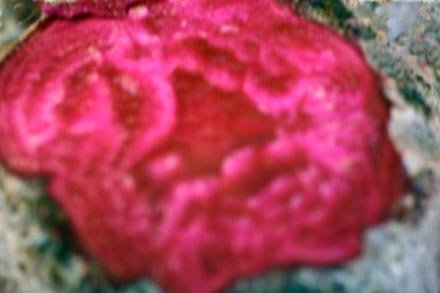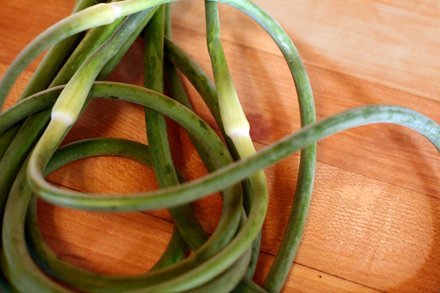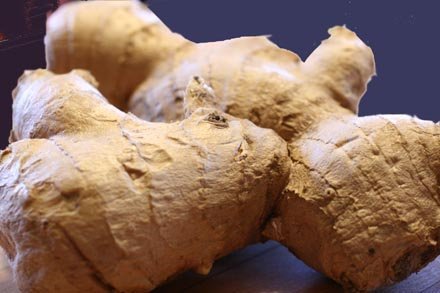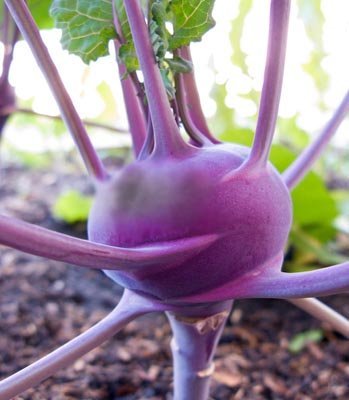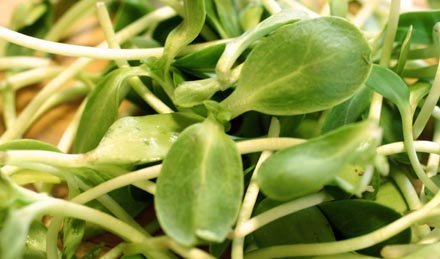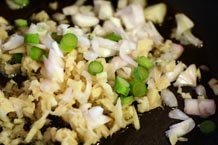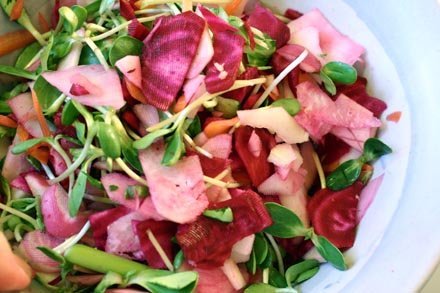Pickled Dilly Garlic Scapes
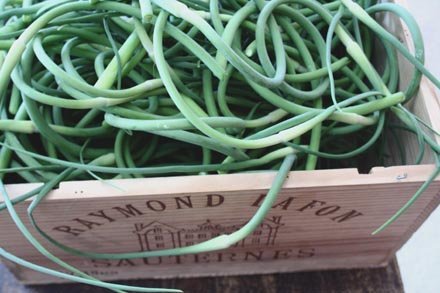
(Vegetarian, Vegan, Wine Pairing)
I drove 451 miles and back for garlic scapes. That’s nearly 8 hours each way. Drove on and on, through an otherworld of two-lane landscaped with soybeans and corn fronds wilting in the overbearing humidity, I caught up on The Splendid Table, My Life as a Foodie, and To the Best of Our Knowledge and then, when the podcasts ran out, I indulged in garlic-tinted daydreams. Before you diagnose me, know this: they were heirloom garlic scapes.
Oh, scapes. They’re a racket, really. You see, those scapes have to be cut. Botanically speaking, a scape is a flowering stem that rises from the bulb or root of a plant. Plants have limited energy, so if the garlic scape is removed, then the plant directs everything toward making strong, fat, firm, juicy bulbs — the bread and butter of the garlic farmer. On most large farms, the pesky scapes are cut and discarded. Knowing this full well, I nevertheless squealed and clapped and handed over my 50-cents-each when I spied the first batch of curling spears balanced in a tin vase at the market. Small-scale farmers are pretty smart.
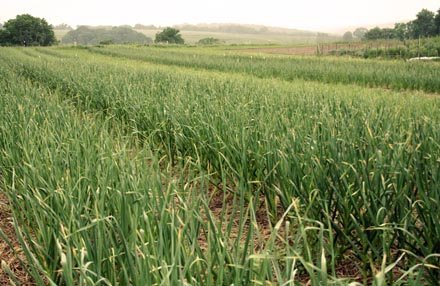
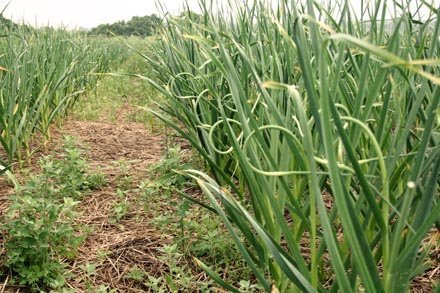
So when I got the opportunity to go scape hunting on an heirloom garlic farm, I pointed my car north and drove. My friend Steph and I met up and together, protected only by scissors and nudged onward by persistent dreams of subtly nuanced pesto, we systematically liberated that infinitude of a garlic field from its scapes. There were just a handful of varieties that were ready to be snipped – German Extra Hardy, Pskem River, Siberian, Persian Star, Georgian Crystal, and one of the hottest garlics around, Georgian Fire.
I’ll tell you more about each variety over the coming weeks, but for now, know this: each variety is brilliantly distinct, just as the eventual cloves will be. For example, the scapes of the Georgian Crystal are mild and grassy, whereas those of the Georgian Fire are definitely cutting teeth. Each variety has a flavor worthy of celebration, so stay tuned.
Tis scape season, and if you’ve grabbed the scissors and are heading outside too, here are a few things to keep in mind: Scapes should be cut just when they begin to curl, like so:
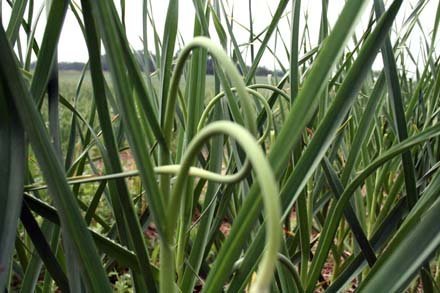
Cut them too soon and they’ll work up the determination of a GDR biker, continuing to grow and thus effectively leaching everything from the bulb underground and leaving it hollow. Plus you won’t get much for your scape-snipping troubles. Also keep in mind that size does matter, at least when it comes to flavor. The bigger the scape, the more intense the garlic flavor – and generally the hotter. Even so, scapes are gentle enough to be used fresh in salads and vinaigrettes, or sautéed and eaten like beans. Last bit of advice? Don’t cut scapes when you’ve been driving for 8 hours with barely a bathroom break and just a mozzarella stick for lunch. The aroma is intoxicating and inspires a painful longing in the empty stomach.
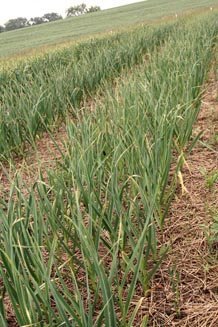 |
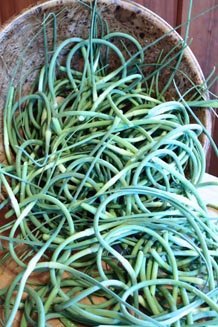 |
So. You still think I’m crazy? You should talk to Simon then. He found my obsessive excursion to be amusing, endearing, undeniably odd, yet invariably typical. None of you have any idea how bad it could get though. There are nearly 540 known varieties of garlic in the world. Six down… .
The Recipe
What does a girl do with 10 pounds of fresh garlic scapes? First, she pickles. Perhaps you’re not the pickle addict that I am, but try this and I bet you will be. True enough, the first time I was presented with pickled garlic I was hesitant to put a whole clove in my mouth. It was a revelation then when I bit in and found that in the vinegar had mellowed the harsh, hot flavor. Scapes are much softer to begin with, and pickling enhances their garlic flavor while smoothing any sharp edges.
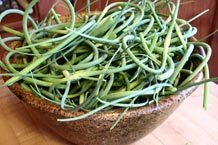 |
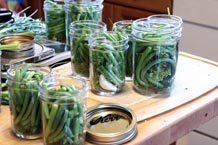 |
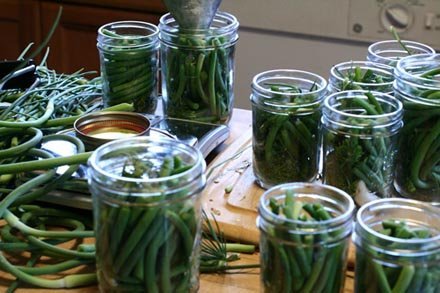
Steph – yes, the same Steph of garlic scape fame – introduced me to this recipe with her (also famous) dilly beans and pickled garlic. The brine produces crispy, deeply flavored pickles that keep a rich color and firm texture. We’re both putting up our scapes this way, and we’re so confident in the formula that we’ll unequivocally tell you to go ahead and use it too. But we’ll report back in a few weeks just to confirm.
And the wine. I guess you’ve noticed. I do seem to enjoy giving Lucy a headache. But this wasn’t as difficult as I expected it might be. When I asked for her sage wine pairing advice for dilly garlic scapes, here’s what she offered: This might not be as unusual as you’d think. If you are treating it as antipasti, why not pair it with Pinot Bianco or Soave? Both are crisp Italian whites that can hold their own with all manner of pickled veggies. (Please, in the name of all that is grapey goodness, don’t substitute Pinot Grigio for the Pinot Bianco. It’s too light and lemony to do much of anything for the garlic.) Savingnon Blanc and Gruner Veltliner also hold up well with all manner of truculent veggies. Avoid Savingnon Blanc from New Zealand in this case. There might be too much citrus or grass to harmonize with the briney taste. Finally, should you decide to nestle the garlic in a sandwich, a very dry rose would be refreshing. My personal favorite this summer is rose of Syrah. The finish is a bit drier than a rose of Pinot Noir.
Dilly Pickled Garlic Scapes
3 lbs fresh garlic scapes, grassy tops removed
16 heads fresh dill
A sprinkle of dried dill seed
A few garlic cloves if you feel like adding them
1/2 cup canning or pickling salt
4 cups white vinegar (5% acidity)
4 cups water
8 small piquin chiles or other hot, dried smoked peppers (optional)
Whole peppercorns
Makes about 8 pints (I used a combination of pint and half-pint jars)
Wash and dry the scapes. If you’re planning to slice them, now is the time. I couldn’t decide – they looked so pretty wound into coils in the jars, but they take up a lot more space that way. I ended up with a mixture of wound scapes and cut pieces – see photo.
Working with sterilized jars, place 2 dill heads, a sprinkling of dill seed, a few peppercorns, a chile and, if using, the garlic cloves, into each jar. Place the scapes inside the jars, packing them tightly but leaving about ½ inch at the top.
In a large saucepan combine the vinegar, water and pickling salt over medium heat. Stir well to dissolve the salt, and bring to a boil. Pour hot liquid over the scapes, again leaving about ½ inch at the top. Place lids on the canning jars, tighten the bands and then process them in a boiling hot water bath for 7-10 minutes. The water should completely cover the jars, and either during the processing or very soon after, the centers of the jars will pop down, indicating that they are sealed.
*note: it’s important to use sterilized jars for canning. You can find information on how to do this here.
Another note: The top part of scapes tend to be grassy and stringy and not so good for eating. Use this part:
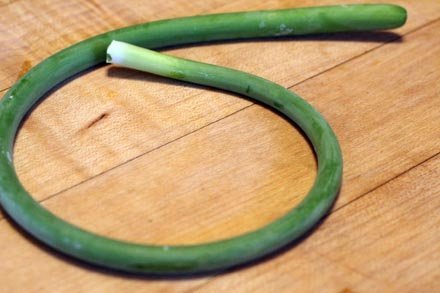
and discard this part (or use it for a rich, aromatic veggie broth):
